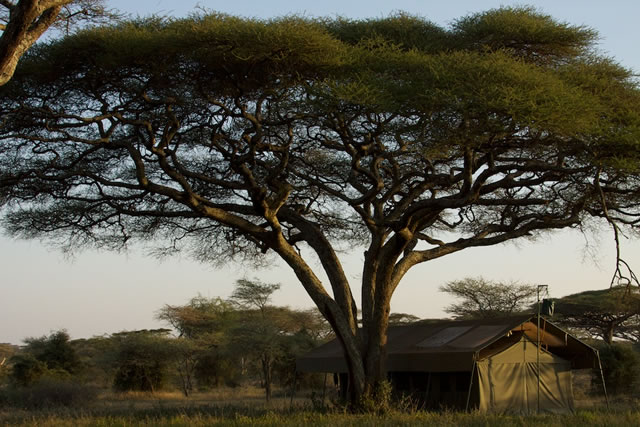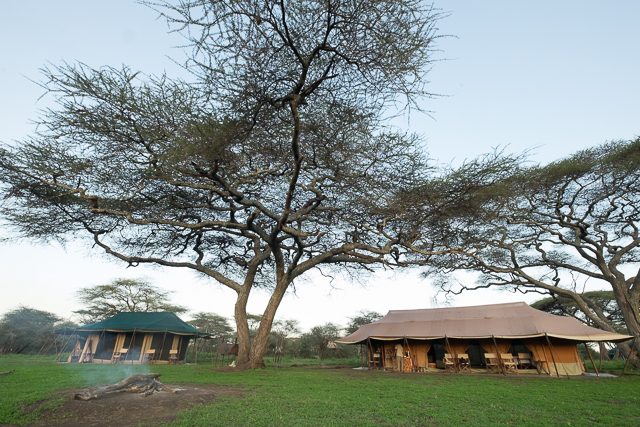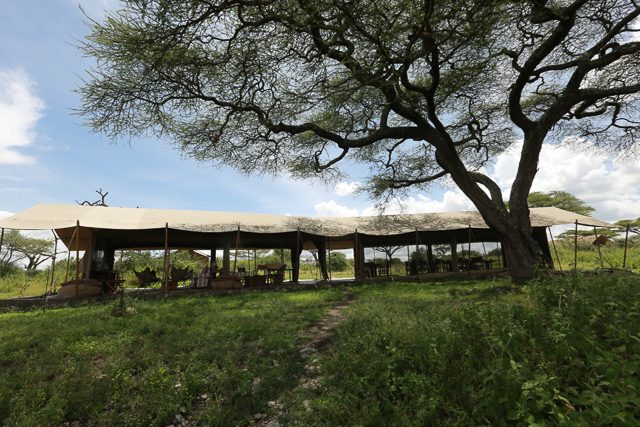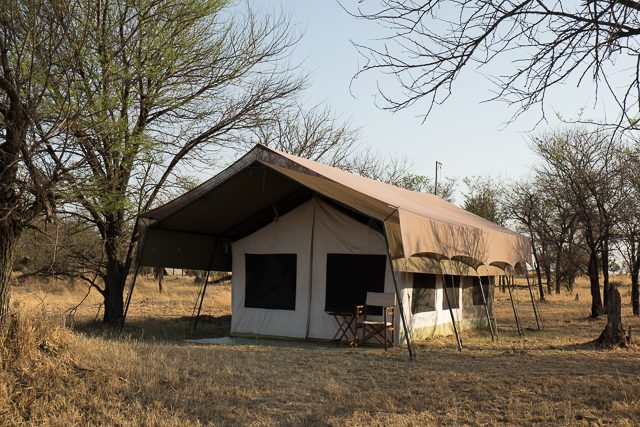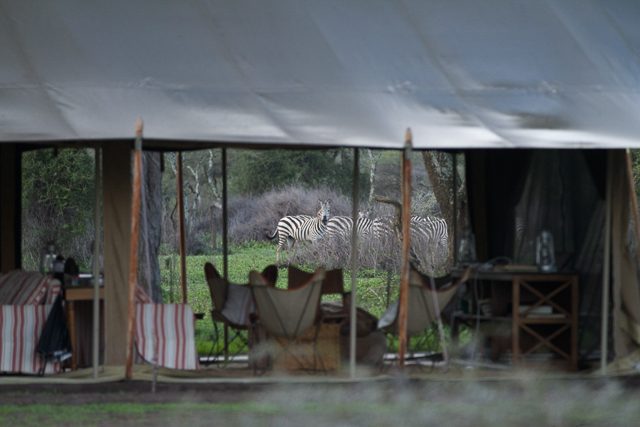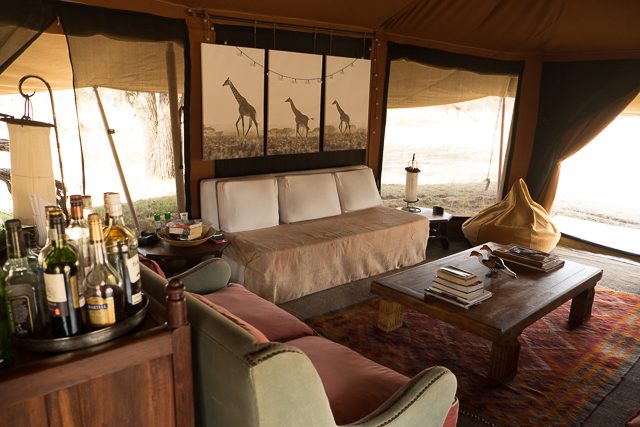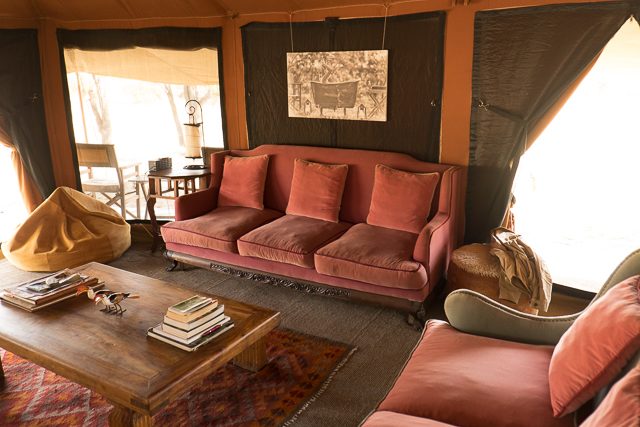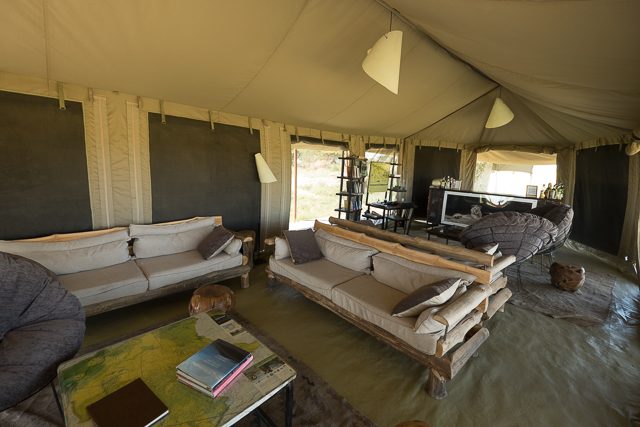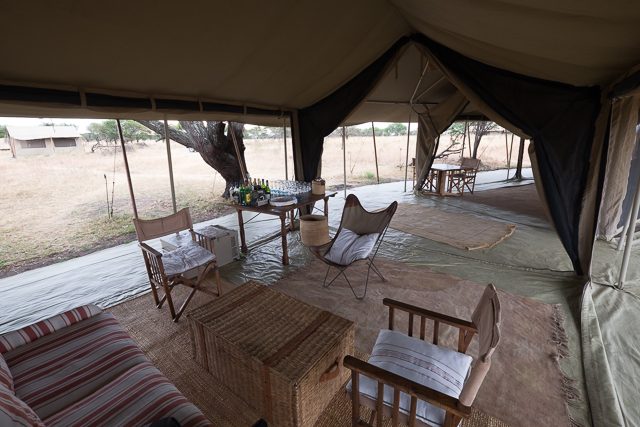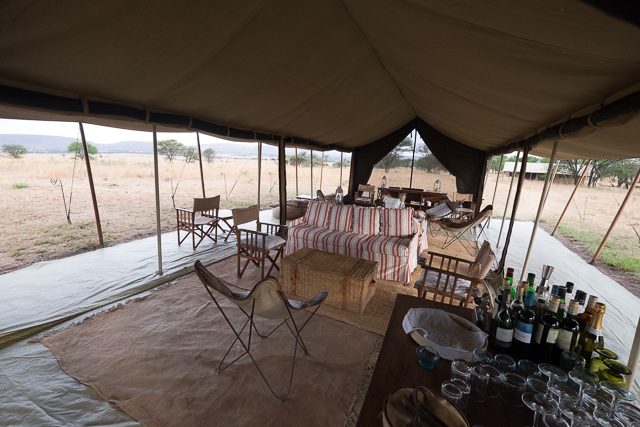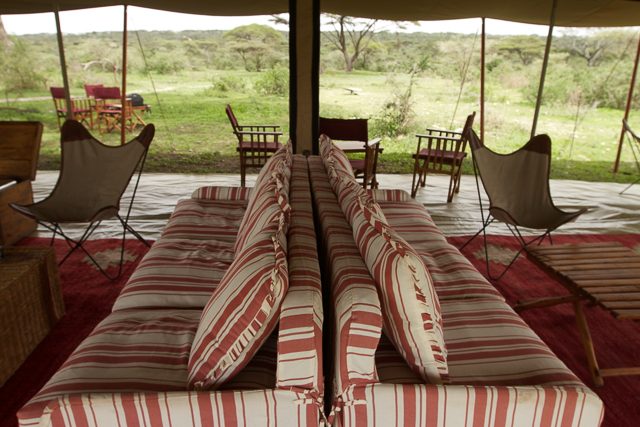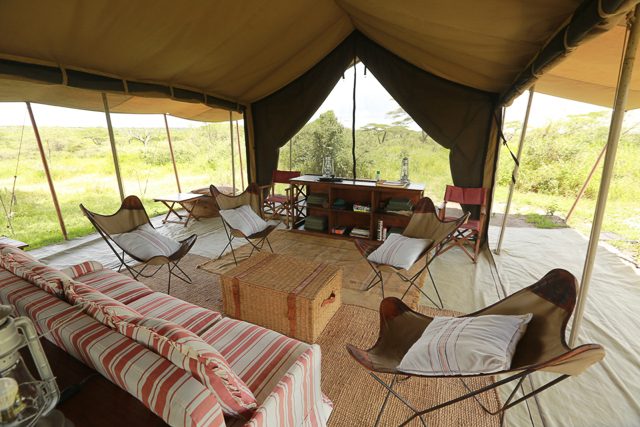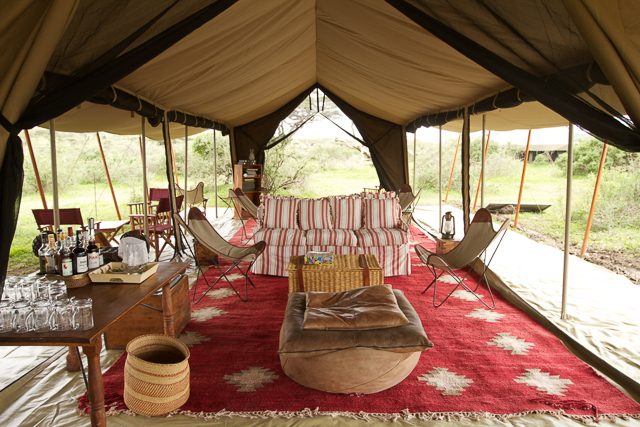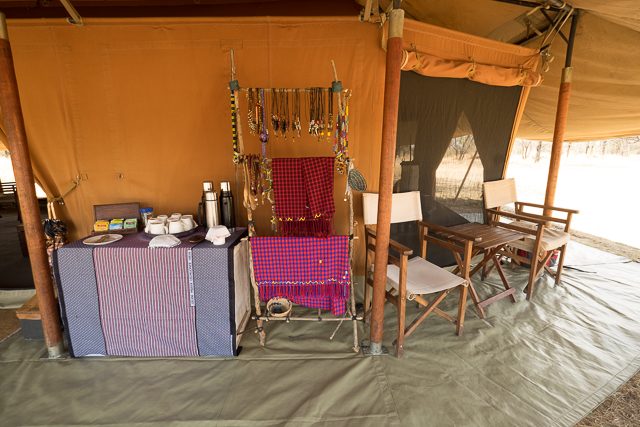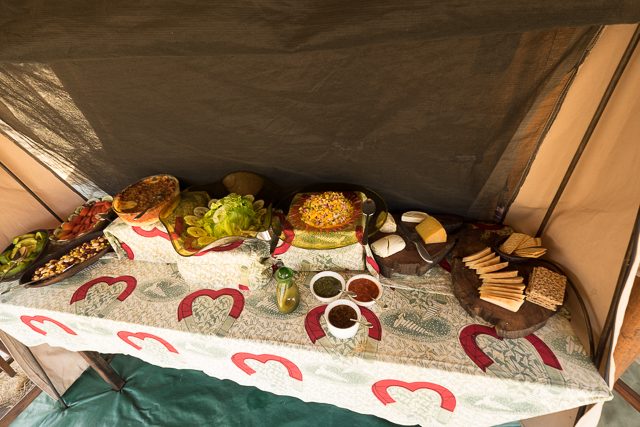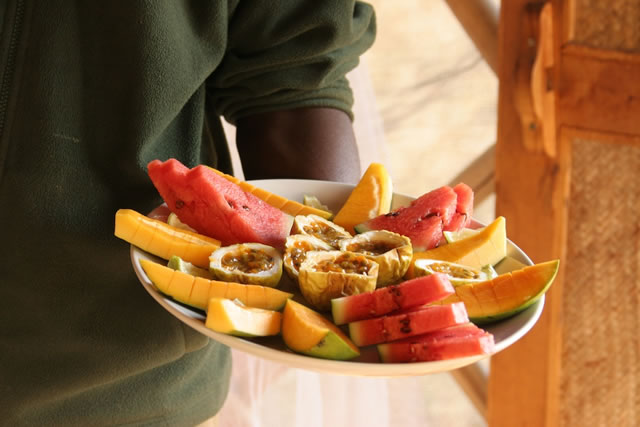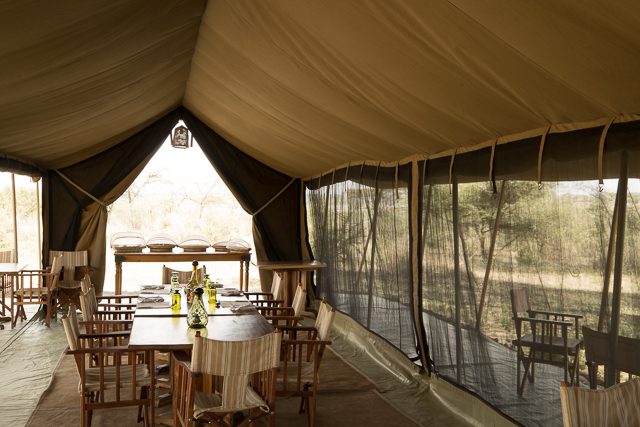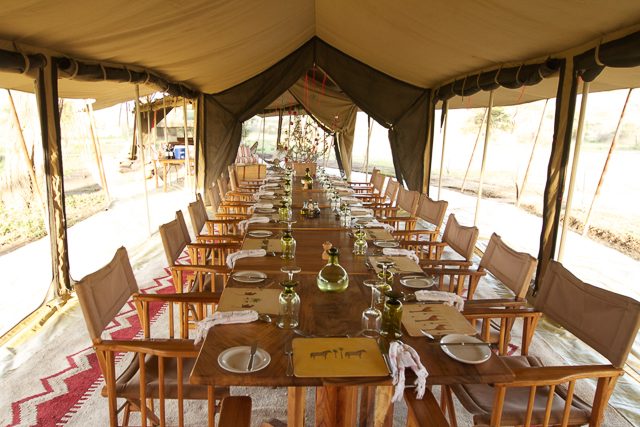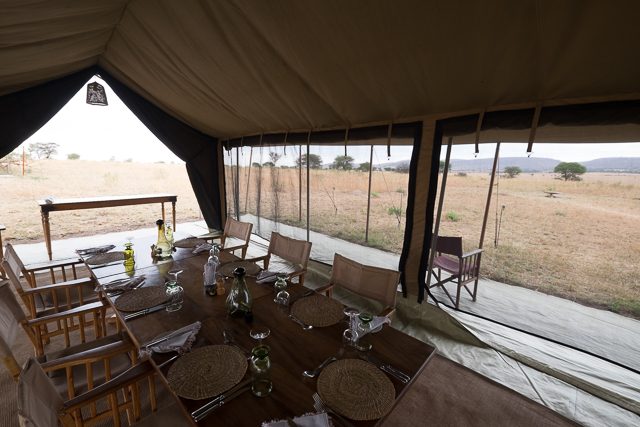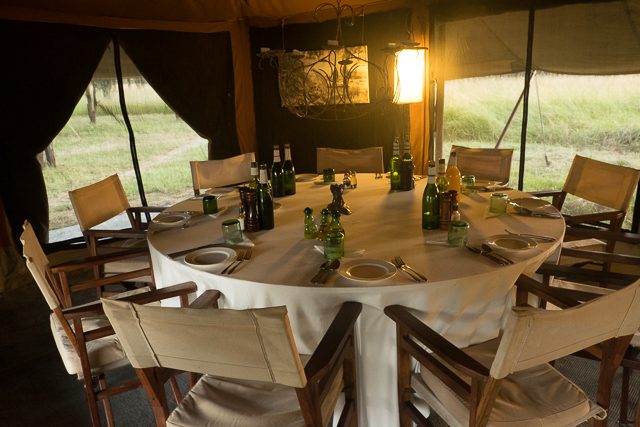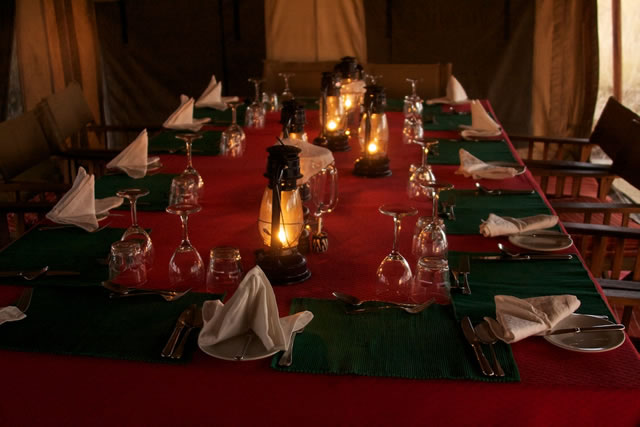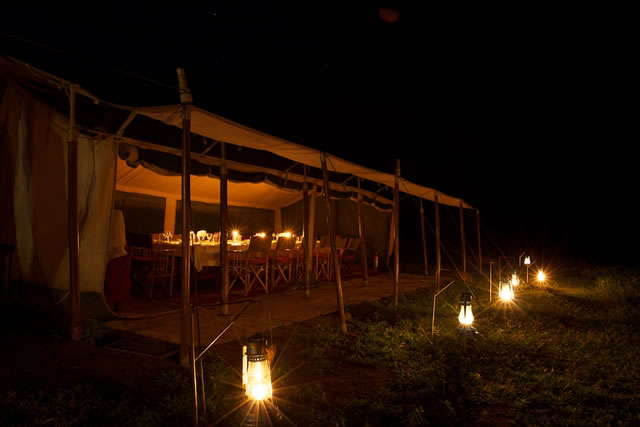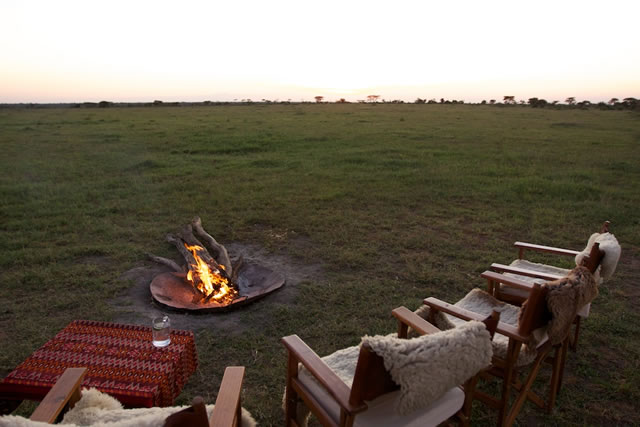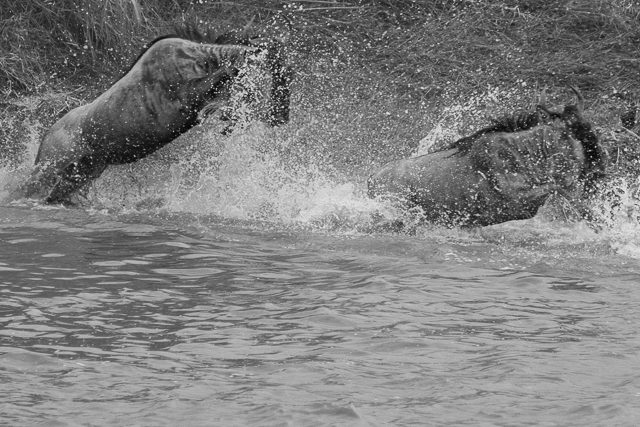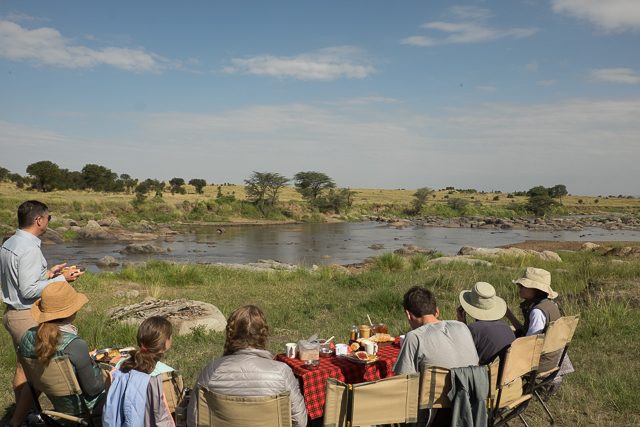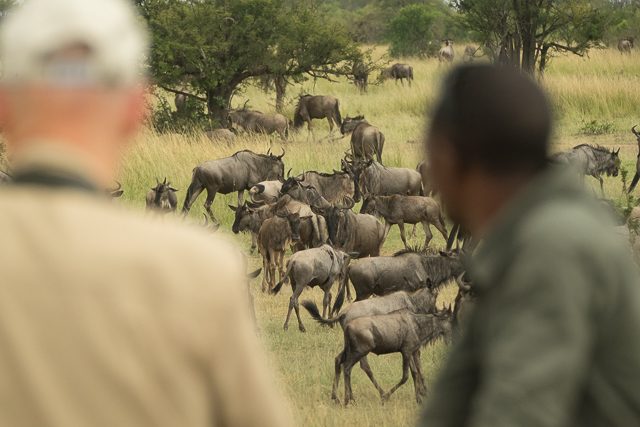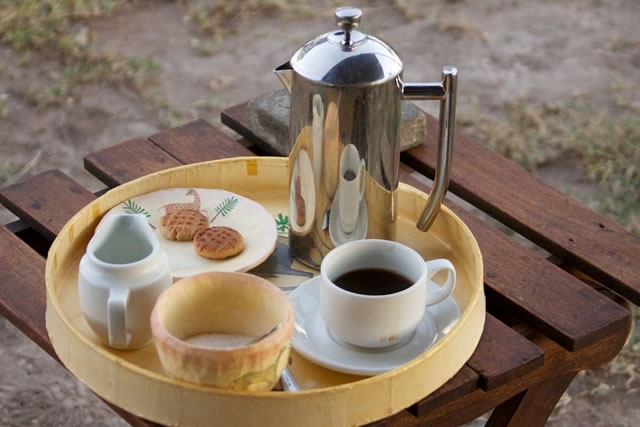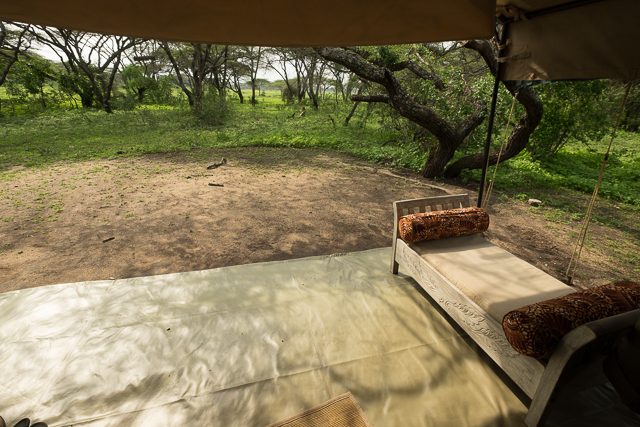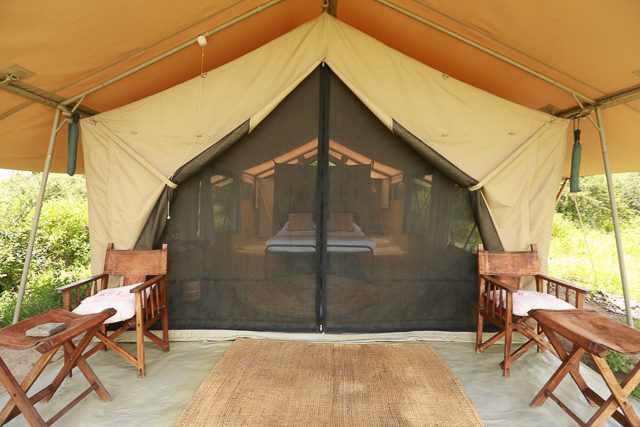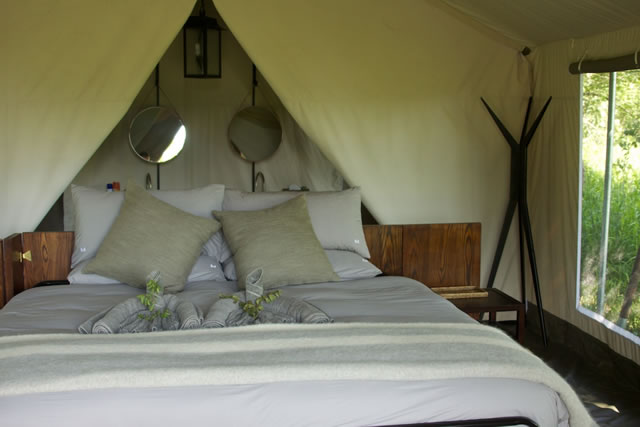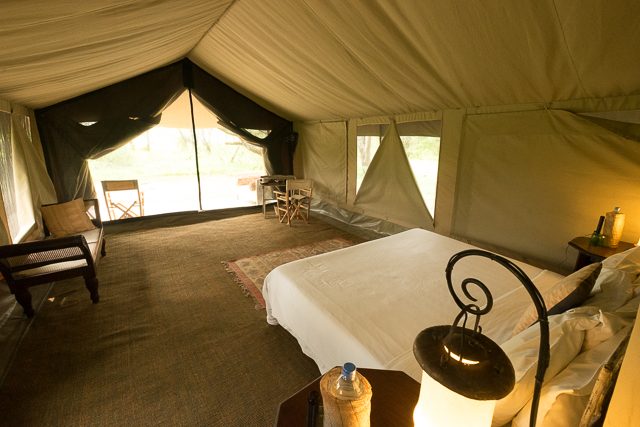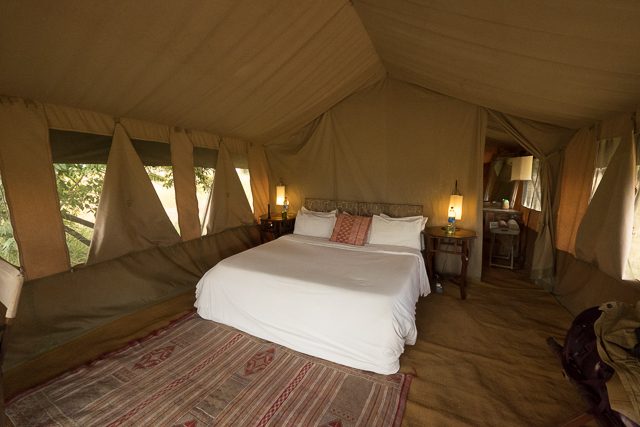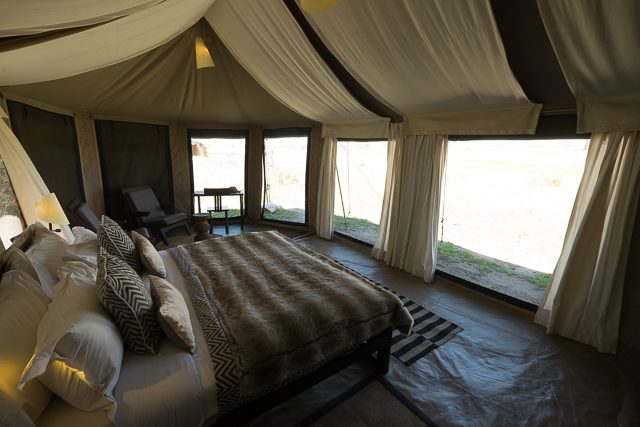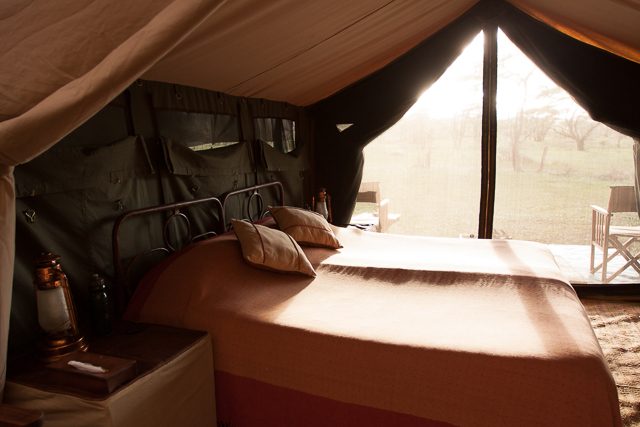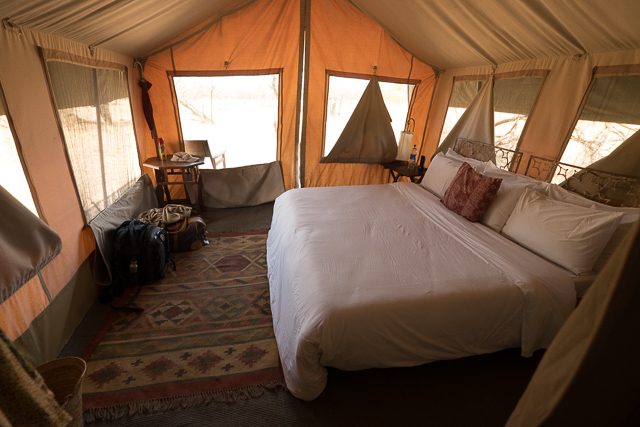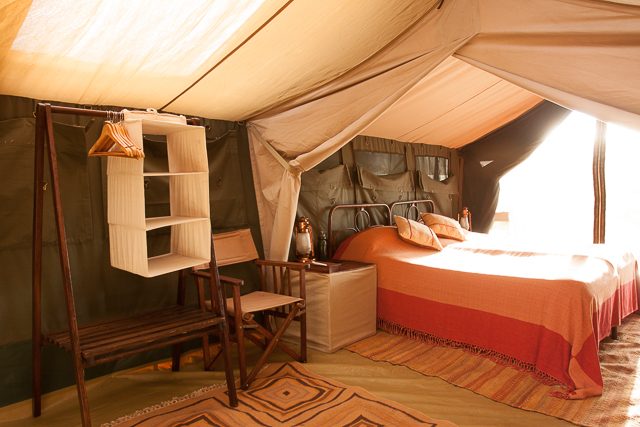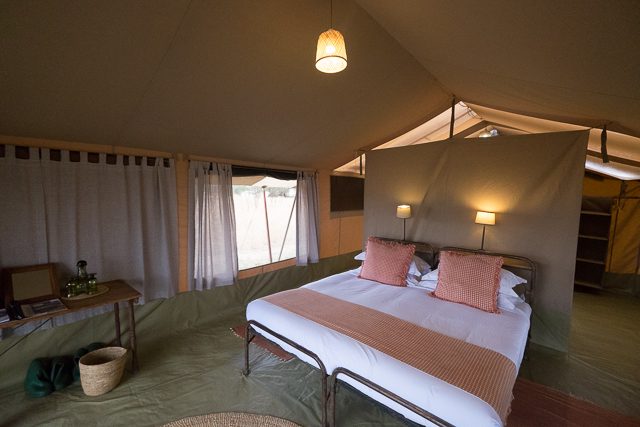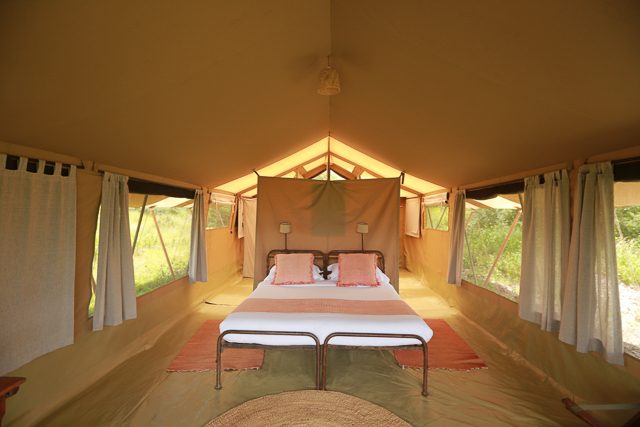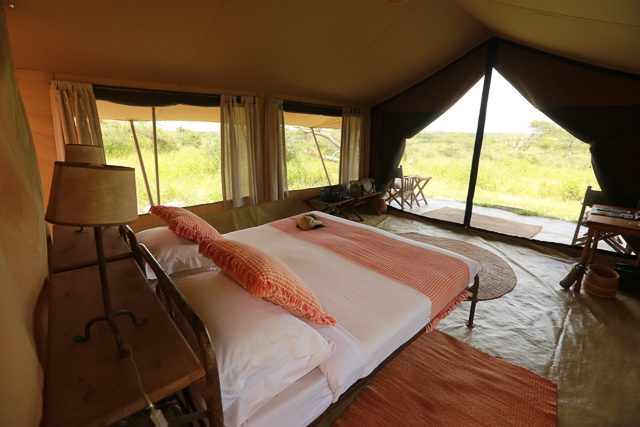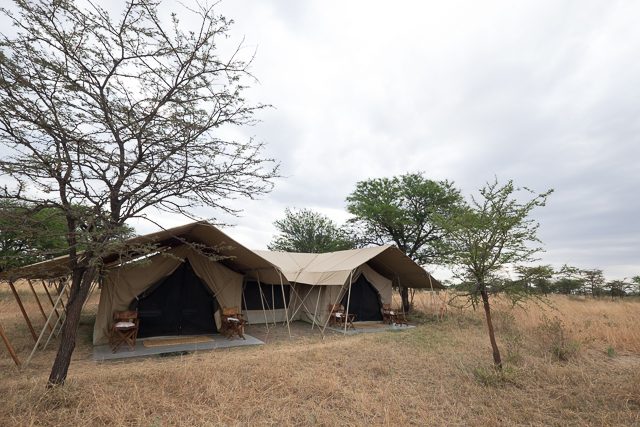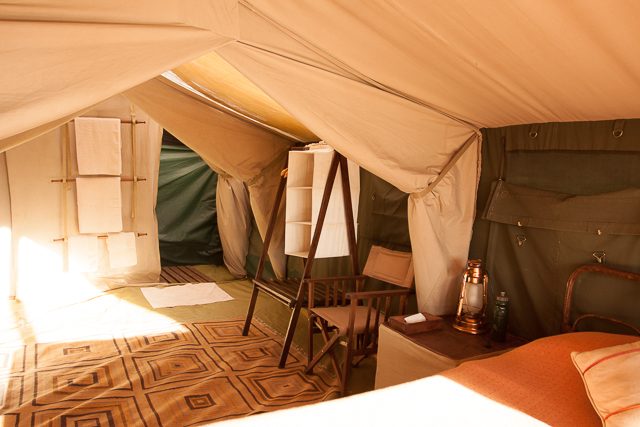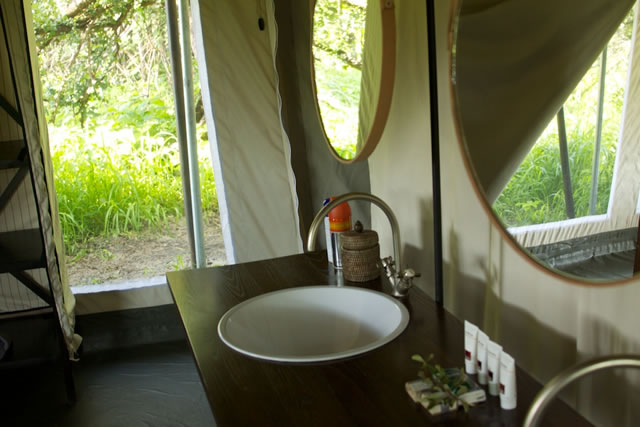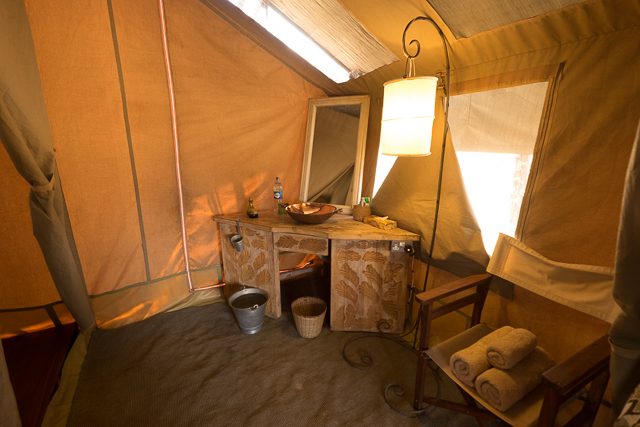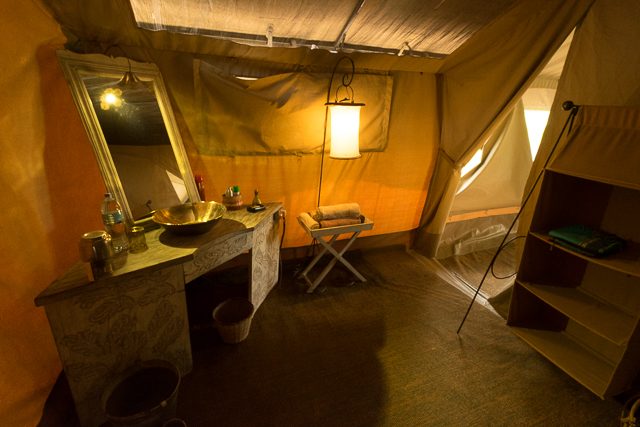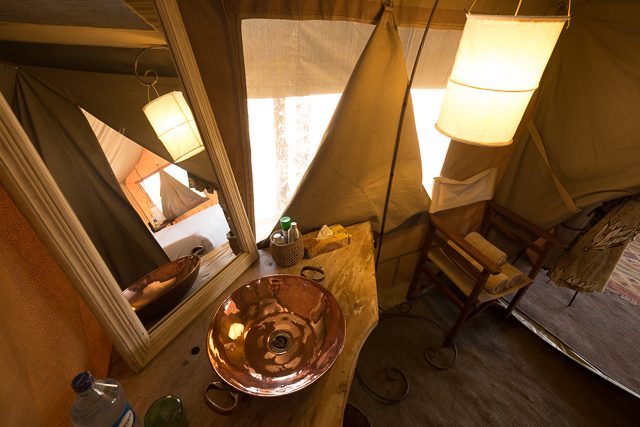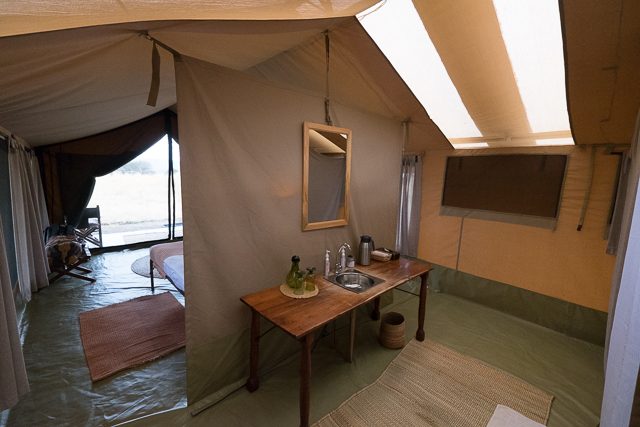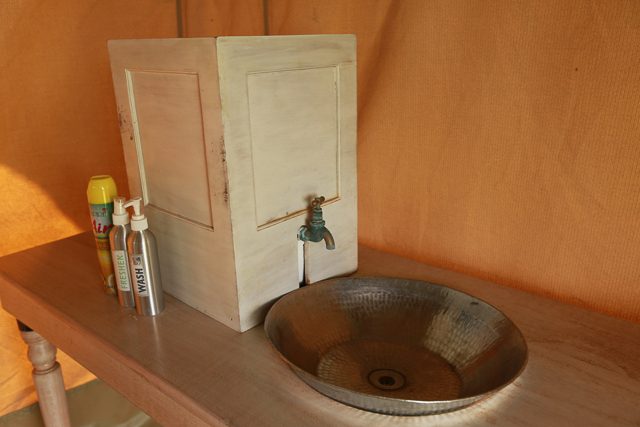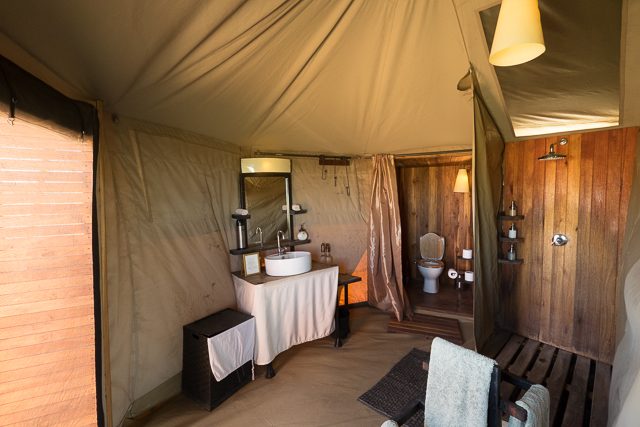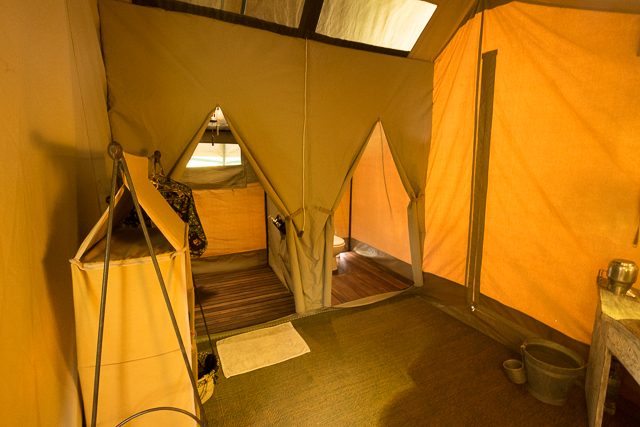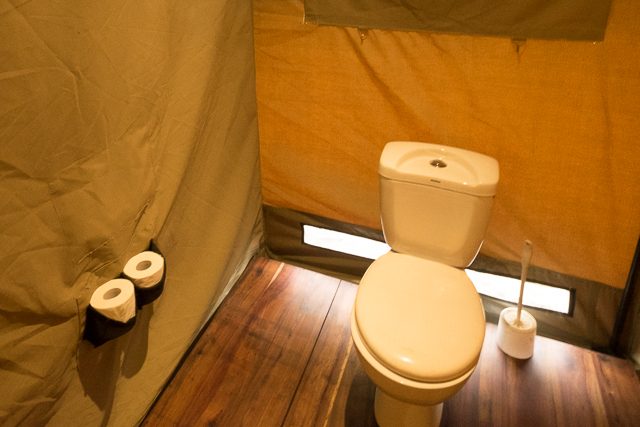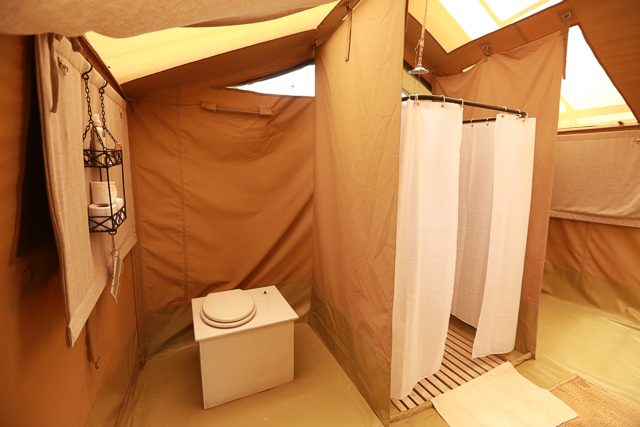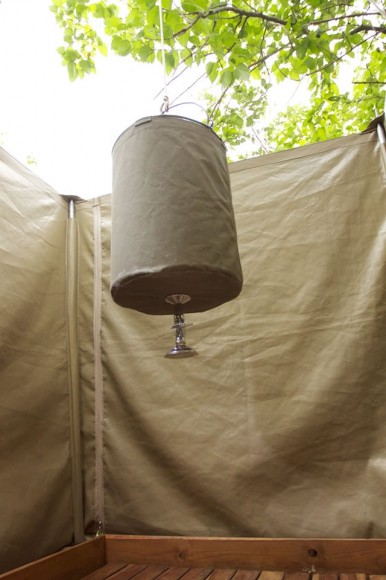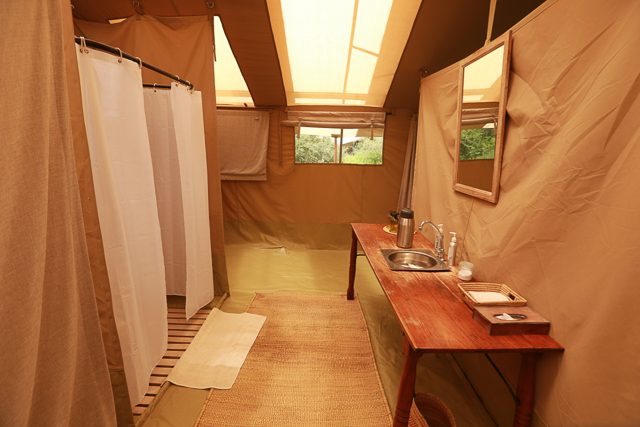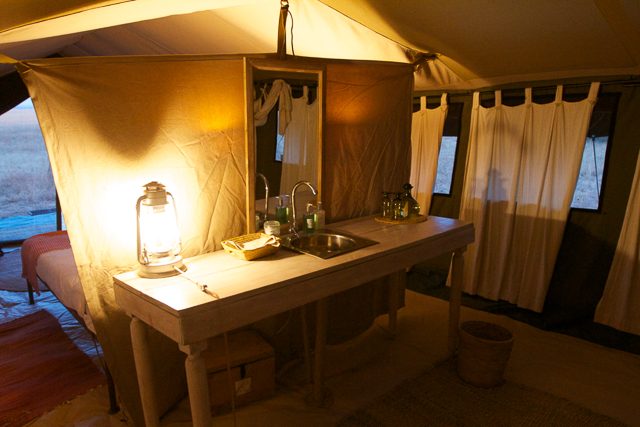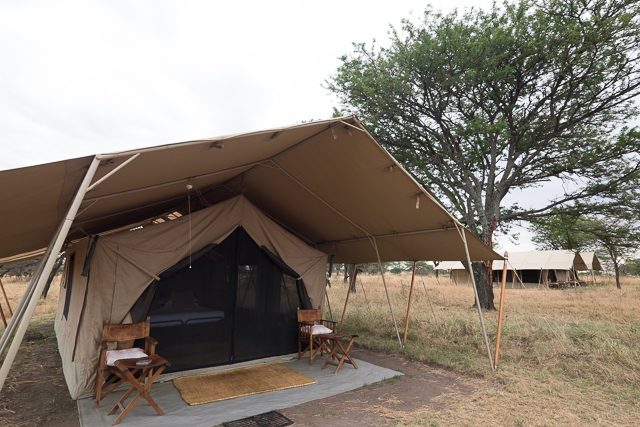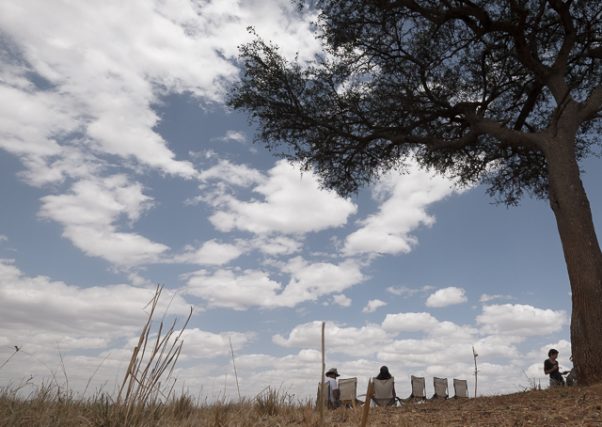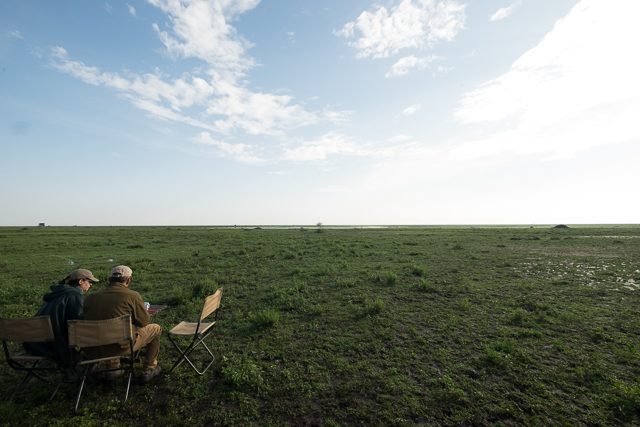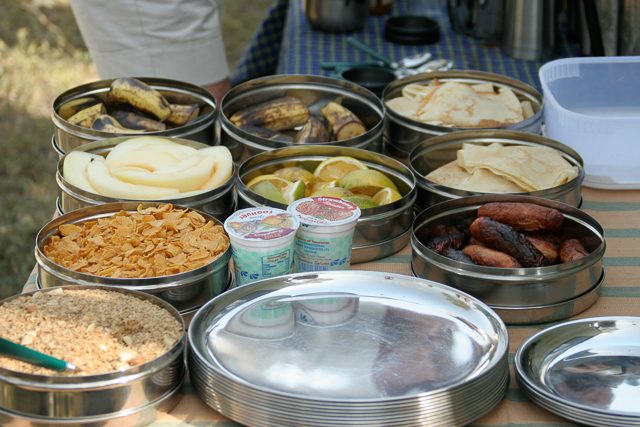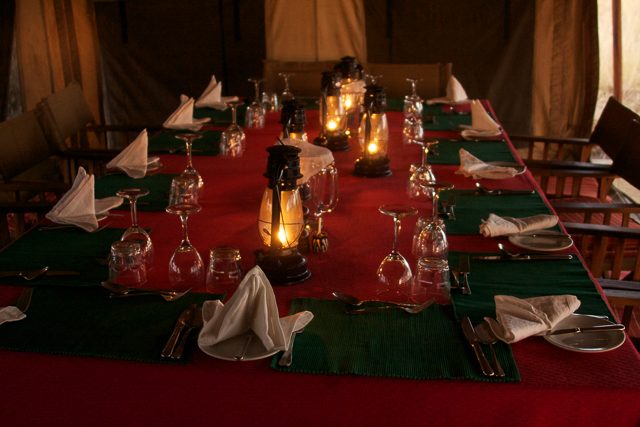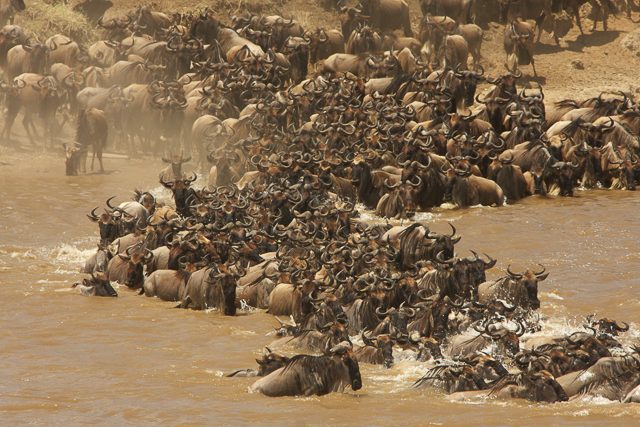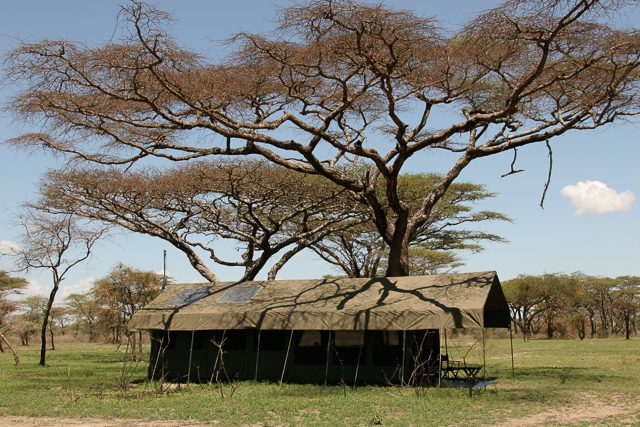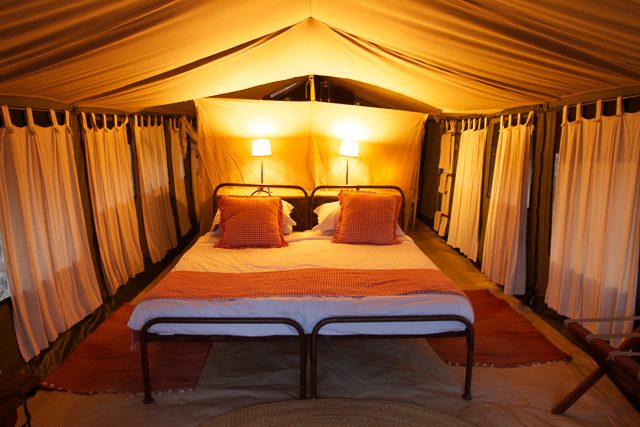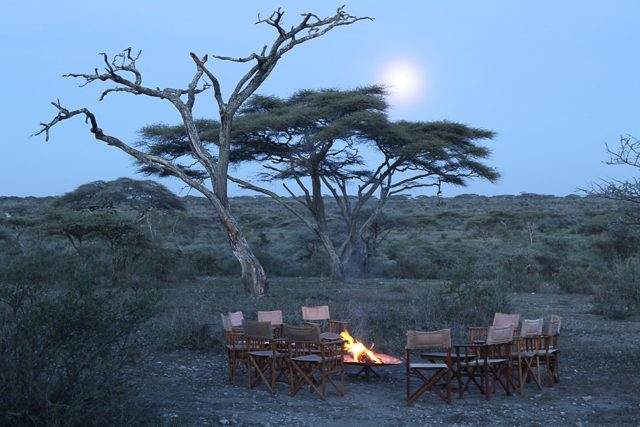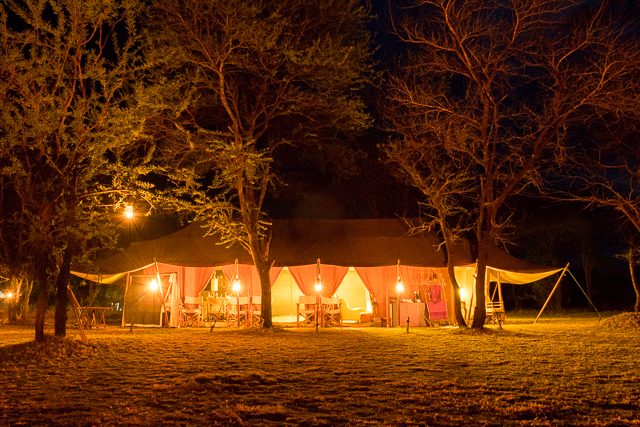Seasonal camps evolved from traditional tented mobile camps, adding more comfort and style and moving less, in order to provide more luxuries.
These tented camps are set up in areas with seasonal wildlife viewing opportunities, which are not suited for year round structures. Seasonal camps are found in remote parts of Namibia, Zambia and Zimbabwe, and have become an outstanding service in the Serengeti of Tanzania, which is most renowned for the Great Migration. This is because, not surprisingly, the wildebeest, zebra and gazelles and many of the attendant predators are prone to move, resulting in wildlife populations fluctuating substantially.
In the Serengeti, seasonal camps move two or three times a year, following the migration. They may set up in one location near the vast open plains in the green season, and move to another site far to the north near the roaring Mara River, in the dry season. An added benefit is that they leave little trace of their presence after they have left, allowing the camp site to recover.
These camps tend to be small, usually having five to eight tents, and are not exclusive (unlike traditional mobile tented camps), unless you are a large enough group to book the whole camp. Here you can swap stories with other guests, as in permanent camps, but combine that with the intimacy of a small camp at a favourable cost.
Seasonal camps tend to be very similar in structure to traditional mobile camps, with much the same atmosphere but because they move less often, they are able to have more furniture, adornments and other amenities. They usually have both a dining tent and a bar/lounge tent, and often have a library, and their large spacious accommodation tents may have solar electric lighting and an en-suite wash-room.
They are nevertheless quite varied in the details. Mostly, although not always, the bathrooms have plumbed hot and cold water available on demand. A few hardy seasonal camps, while having en suite bathrooms, maintain the traditional safari bucket-style shower, and some still have the environmentally-friendly dry-flush loo. Some have limited wifi in one part of the camp, while a few have no modern communication facilities at all.
These camps are wonderful places to stay for a few nights, as they are often nearer the migration, or they allow you to see a different area without having to pay the expense of sending your own camp there.
Here, more than anywhere, you will be able to imagine what it must have been like, on the first luxury safaris nearly a hundred years ago, exploring the wilds of Africa.

